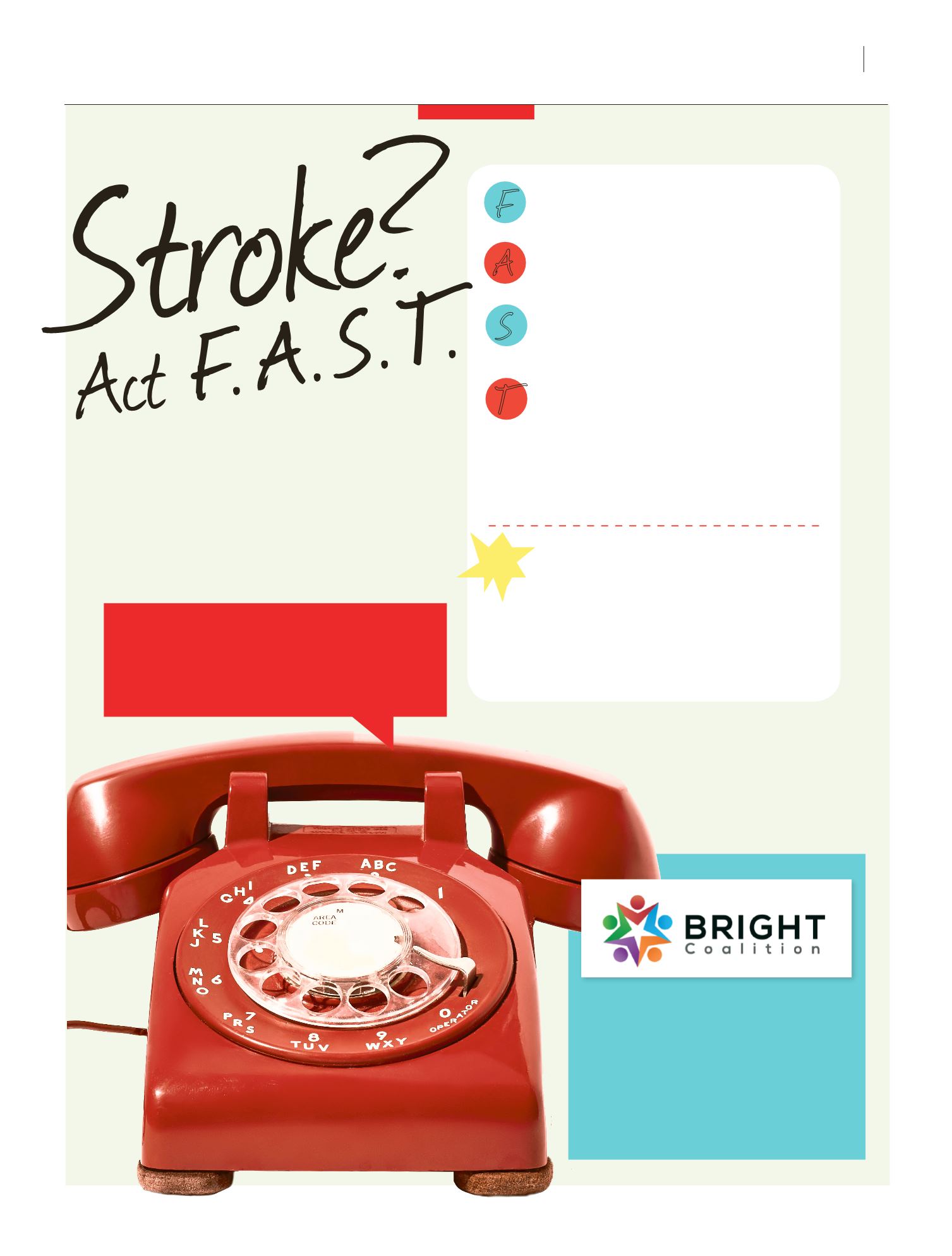

Help us understand the mental
health and substance abuse
needs of our community! Take
the BRIGHT Coalition’s brief,
confidential survey.
surveymonkey.com/r/
BRIGHTMentalHealth
During a stroke, blood flow to the brain is blocked
or interrupted. And when that happens, brain cells
start to die. Quick treatment is essential to reduce
the risk of serious complications, disability and death.
So know the signs of stroke. It helps to think F.A.S.T.:
Sources: American Heart Association; National Institutes of Health; National Stroke Association
When a stroke strikes, time is of the essence.
Face drooping.
Is one side of the face droop-
ing or numb? Ask the person to smile—is the smile
uneven?
Speech difficulty.
Can the person speak at all?
Is speech slurred or otherwise difficult to under-
stand? Ask the person to repeat a simple sen-
tence. Can they repeat it correctly?
Arm weakness.
Is one arm weak or numb? Ask
the person to raise both arms out to the sides,
and take note if one arm drifts downward.
Time to call 911.
If a person has any of these
symptoms, call 911 for help. Call even if symptoms
go away. And note the time so you can let medi-
cal personnel know what time symptoms started.
F
A
S
T
A stroke is a medical emergency.
Always call 911 right away.
Our emergency department
staff are trained to treat stroke.
Even better than
stopping a stroke?
Preventing one in
the first place.
The most common type of stroke can be treated with a
medication called tissue plasminogen activator (tPA).
And the more quickly that a person is treated with tPA,
the less damage the stroke may cause.
1
Keep blood pressure and
cholesterol at optimal levels.
2
If you have diabetes or
heart disease, work with
your doctor to get the condi-
tion under control.
3
Maintain a healthy weight,
eat a nutritious diet and
get regular exercise.
APRIL 2017
5
STROKE SIGNS
















